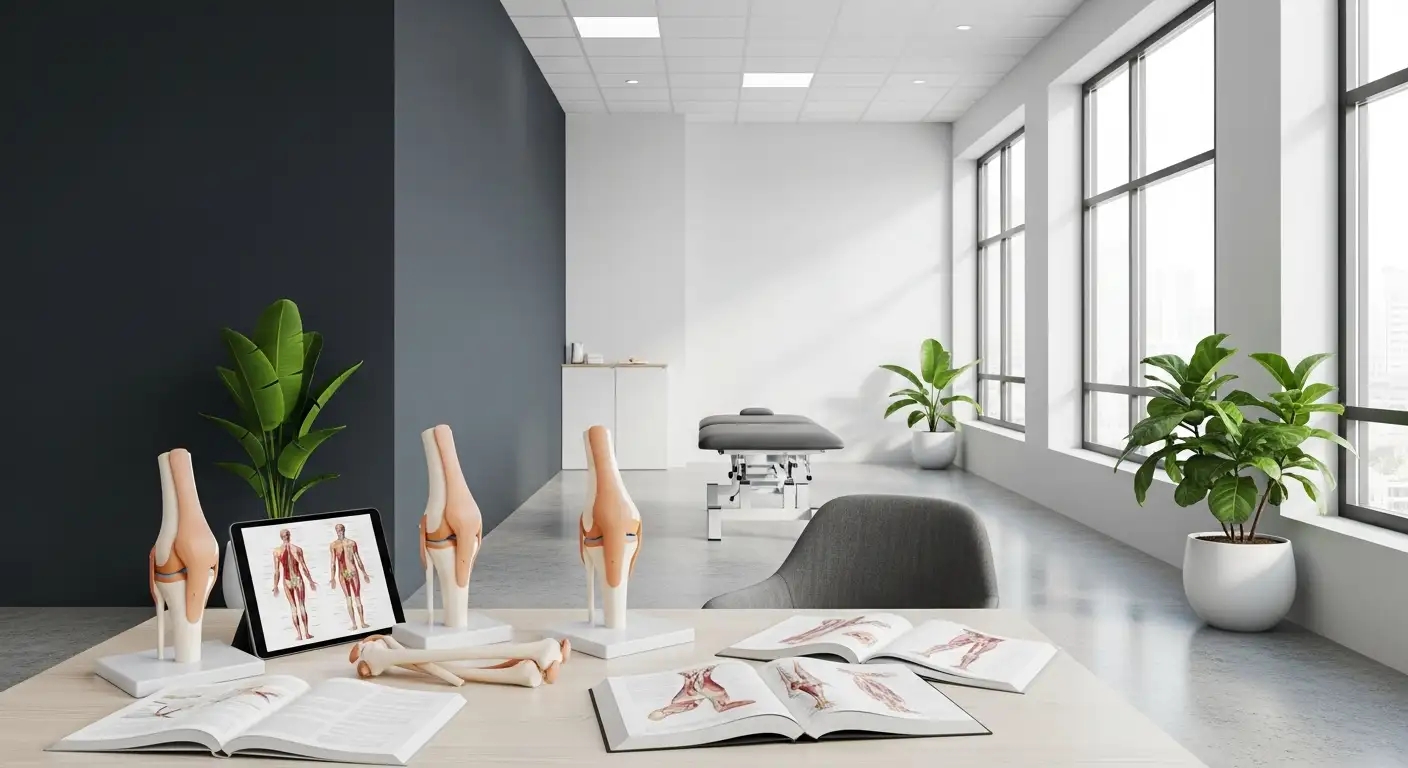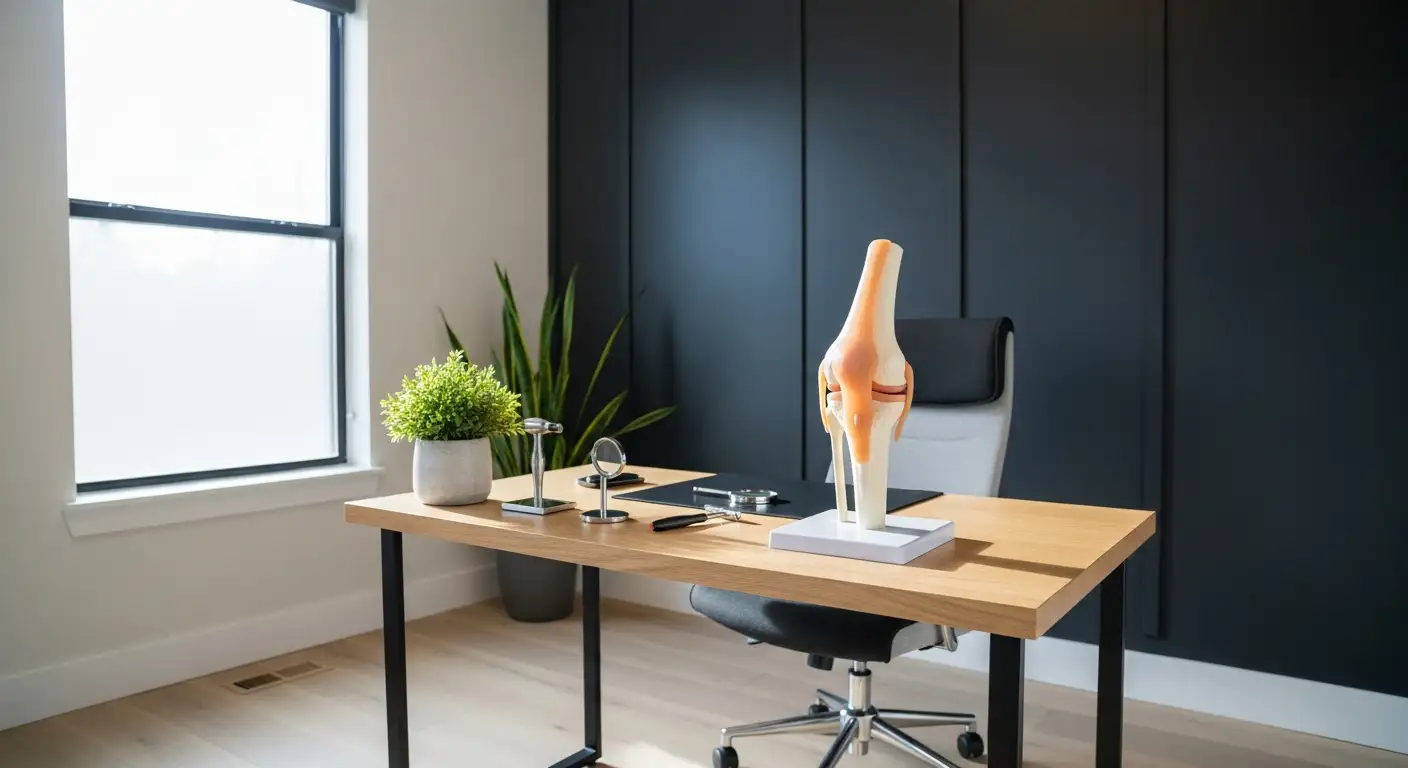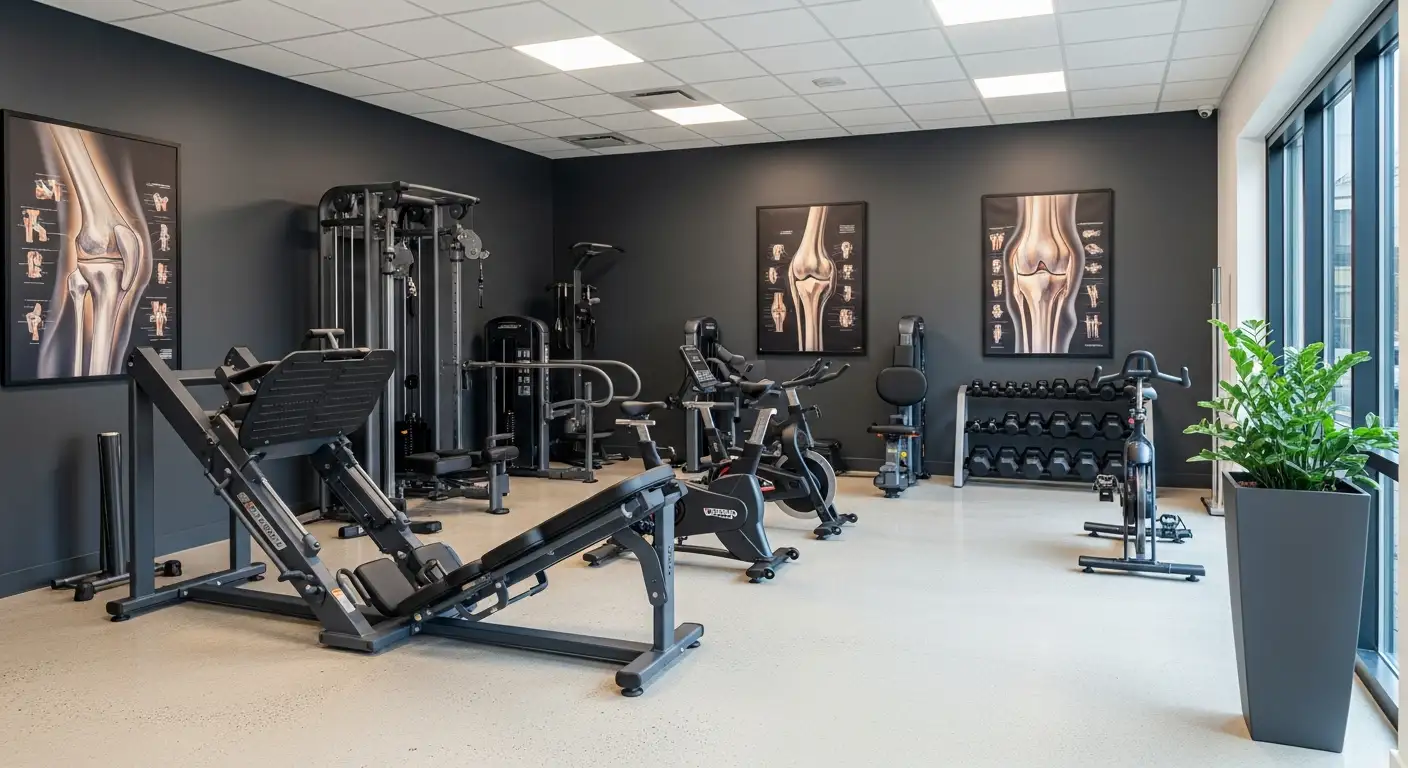Understanding Knee Pain
Knee pain is a common health issue that can affect people of all ages. It's especially prevalent among adults in the U.S., with about 1 out of every 4 adults experiencing chronic knee pain according to Advent Physical Therapy. A particular type of discomfort, characterized by knee pain when the leg is straight, can be caused by various injuries or medical conditions.
Prevalence of Knee Pain
Knee pain is a widespread ailment in the U.S., with about 25% of adults experiencing chronic knee pain. It's important to note that the prevalence of knee pain when the leg is straight can vary depending on the underlying cause. Certain issues such as meniscus injuries, osteoarthritis, patellar tendonitis, and patellofemoral pain syndrome can lead to this specific type of knee pain.

Symptoms of Knee Pain
Knee pain when the leg is straight can present with various symptoms depending on the specific cause. For example, meniscus injuries often result in pain especially when standing from a seated position or when the leg is straight. These injuries can result in minor to severe damage to the knee, according to UpToDate.
Osteoarthritis of the knee can lead to pain, stiffness, and swelling in the knee joint, often causing pain when the leg is straight due to the breakdown of cartilage in the joint. This leads to bone-on-bone contact, which can be quite painful [1].
Patellar tendonitis, also known as jumper's knee, can cause tenderness at the bottom of the kneecap, making it painful to straighten the leg [1].
Lastly, patellofemoral pain syndrome may result in knee pain when the leg is straight, often accompanied by pain when climbing stairs, sitting with knees bent, or after prolonged sitting.
Understanding the symptoms associated with knee pain when the leg is straight can be an essential first step in seeking appropriate medical attention and treatment.
Common Causes of Knee Pain
Understanding the common causes of knee pain is key in pinpointing the exact source of discomfort and determining the most effective treatment plan. The causes can be broadly categorized into two groups: those due to injuries and those due to medical conditions.
Injuries and Knee Pain
Injuries to the knee can often result in discomfort, especially when the leg is straight. Such injuries may include a torn ligament, runner's knee, a meniscus tear, or patellar tendonitis, all of which often require medical evaluation for accurate diagnosis and treatment.
It's also worth noting that knee injuries, such as those to the anterior cruciate ligament (ACL) or meniscus, can affect people of all ages and often cause pain when the leg is straight.
Here are some common knee injuries that could lead to knee pain when the leg is straight:
- Torn ligament
- Runner's knee
- Meniscus tear
- Patellar tendonitis
Medical Conditions and Knee Pain
Apart from injuries, certain medical conditions could also result in knee pain when the leg is straight. One such condition is osteoarthritis, which can lead to pain, stiffness, and swelling in the knee joint.
According to UpToDate, other medical conditions that could cause this kind of knee pain include patellar tendonitis and patellofemoral pain syndrome.
The Mayo Clinic also lists osteoarthritis, tendinitis, a torn meniscus, a sprained ligament, or patellar tendinitis as possible causes of knee pain when the leg is straight.
Here are some common medical conditions that could lead to knee pain when the leg is straight:
- Osteoarthritis
- Patellar tendonitis
- Patellofemoral pain syndrome
- Tendinitis
- Sprained ligament
Understanding the source of knee pain is crucial in determining the most appropriate course of treatment. If you're experiencing knee pain when your leg is straight, it's recommended to seek medical attention for a comprehensive evaluation.
Diagnosing Knee Pain
Diagnosing knee pain, particularly when the leg is straight, is crucial for developing an effective treatment plan. This process typically involves a physical examination and imaging tests, such as X-rays or MRI scans. In some cases, arthroscopy may be recommended for a more detailed view inside the joint. Let's delve deeper into these diagnostic procedures.
Physical Examination
A physical examination is often the first step in diagnosing knee pain when the leg is straight. The doctor will assess the knee's range of motion, stability, and strength. They may also palpate the knee area to locate the source of pain. During this examination, it's important for individuals to communicate any specific discomfort they experience when their leg is straightened.
The physical examination can provide valuable insights about potential injuries or conditions contributing to the knee pain. It helps the doctor identify signs of swelling, redness, warmth, and tenderness in the knee area. These findings guide the subsequent diagnostic steps [3].
Imaging Tests and Knee Pain
If the physical examination isn't conclusive, or if the doctor suspects an underlying condition, imaging tests may be recommended. These tests provide a more detailed look at the knee structure, aiding in the diagnosis of issues causing pain when the leg is straight.
X-rays can reveal bone fractures, degenerative joint disease (osteoarthritis), or signs of certain infections. MRI scans, on the other hand, can provide a more detailed image of both bone and soft tissues, including ligaments, tendons, and cartilage. This makes MRIs particularly useful in diagnosing soft tissue injuries, such as meniscus tears or ligament sprains.
In some cases, if the cause of pain is still unclear, a doctor may recommend an arthroscopy. This procedure involves inserting a small camera through a tiny incision near the knee, providing a detailed view inside the joint [5].
The use of these diagnostic tools depends on the individual's specific symptoms, the severity of the knee pain, and the suspected underlying cause. By combining the results of the physical examination and imaging tests, doctors can accurately diagnose the cause of knee pain when the leg is straight, and prescribe the most effective treatment plan.
Treatment Options for Knee Pain
The treatment for knee pain when the leg is straight can involve a variety of non-surgical and surgical strategies. The choice of treatment depends on the severity of the pain, the underlying cause, and the individual's general health status.
Non-surgical Treatments
Non-surgical treatments are typically the first line of intervention for knee pain when the leg is straight. These may include rest, ice, physical therapy, and medications.
Rest and ice can help reduce swelling and inflammation in the knee, providing temporary relief from pain. Physical therapy, such as that provided at Border Therapy Services, can assist individuals suffering from knee pain when the leg is straight but not when bent. This therapy enables them to improve their quality of life and engage in daily activities with reduced discomfort.
Medications like pain relievers or anti-inflammatories can help manage the pain and inflammation associated with knee conditions. Braces or arch supports can also provide additional support and stability to the knee, reducing the strain on the joint.
Injections, such as corticosteroids or hyaluronic acid, may also be used to provide relief from knee pain. These are usually administered by a healthcare professional and can offer long-term pain relief.
Surgical Treatments
In severe cases where non-surgical treatments have not been effective, surgery may be considered to address the underlying cause of the knee pain when the leg is straight. The type of surgery will depend on the specific condition causing the pain, such as patellofemoral pain syndrome, meniscus tears, patellar tendinitis, or osteoarthritis [1].
Surgical treatments may include arthroscopy, partial knee replacement, or total knee replacement. Arthroscopy is a minimally invasive procedure that allows the surgeon to view, diagnose, and treat problems inside the knee joint. Partial or total knee replacement involves replacing damaged parts of the knee with artificial components.
It's crucial to keep in mind that surgery should be seen as a last resort and is typically only considered when all other treatment options have been exhausted or are not suitable.
Regardless of the treatment option chosen, seeking medical advice is essential for the proper diagnosis and treatment of knee pain when the leg is straight. Timely intervention can reduce the risk of further complications and improve the overall prognosis [3].
Prevention and Management of Knee Pain
Preventing and managing knee pain when the leg is straight involves a combination of lifestyle modifications and targeted exercises. These measures can help strengthen the muscles around the knee, improve flexibility, and reduce the risk of injuries.
Lifestyle Modifications
Adopting certain lifestyle changes can help prevent knee pain. One of the most effective preventative measures involves maintaining a healthy weight. Excess weight can put additional strain on the knee joints, leading to pain and potentially causing damage over time.
Regular exercise is another key component of preventing knee pain. Exercise helps to strengthen the muscles that support the knee, reducing the risk of injuries and pain. However, it's crucial to use proper techniques during physical activities to avoid putting unnecessary stress on the knees. In addition, high-impact or repetitive stress on the knees should be avoided whenever possible.
Another aspect to consider is muscular imbalance, where one muscle group may be stronger or more overworked than another. This imbalance can lead to knee pain, especially in athletes with improper form.
Exercise and Rehabilitation
Specific exercises and rehabilitation programs can be highly effective in managing knee pain, particularly pain experienced when the leg is straight. Stretching can address muscular imbalances by improving strength and flexibility, thus enabling a wider range of motion [6].
For instance, tight hamstrings due to inactivity can limit muscle potential, leading to knee pain. Regular stretching can help to alleviate this issue.
Strengthening other areas of the body, like the core and gluteal muscles, can also help prevent knee injuries and pain. These muscles are interconnected with the muscles of the knee, and exercises targeting these areas can contribute to overall knee health.
However, if knee pain persists despite stretching and strengthening exercises, or if symptoms such as sudden sharp pain, mobility issues, clicking or popping sounds, or knee buckling occur, it is advisable to seek medical help.
In conclusion, proper exercise, weight management, and lifestyle modifications can play a significant role in preventing and managing knee pain when the leg is straight. However, persistent or severe symptoms should be evaluated by a medical professional to ensure appropriate treatment.
When to Seek Medical Attention
Understanding when to seek medical attention is crucial when dealing with knee pain when the leg is straight. This section aims to highlight the warning signs and symptoms that necessitate a visit to the doctor and emphasize the importance of timely intervention.
Warning Signs and Symptoms
If knee pain persists despite stretching and strengthening exercises, or if symptoms like sudden sharp pain, mobility issues, clicking or popping sounds, or knee buckling occur, it is advisable to seek medical help [6].
Moreover, knee pain when the leg is straight may be a sign of a potentially serious problem, such as a hamstring injury or a blood clot. Seeking medical attention is recommended if there is severe pain, swelling, redness, or warmth in the knee [4].
Importance of Timely Intervention
Seeking prompt medical attention for knee pain when the leg is straight is crucial, as delaying treatment can result in worsening of the underlying condition and further complications.
Timely intervention aids in proper diagnosis and treatment of the condition. Treatment options may include physical therapy, rest, ice, elevation, anti-inflammatory medications, and in severe cases, surgery [3].
For accurate diagnosis and treatment, a doctor may recommend physical examination, imaging tests like X-rays or MRI, or in some cases, arthroscopy to look inside the knee joint.
In conclusion, knee pain when the leg is straight should not be ignored. Recognizing the warning signs and symptoms, and seeking prompt medical attention, can lead to timely diagnosis, effective treatment, and prevention of further complications.
References
[1]: https://www.uptodate.com/contents/knee-pain-beyond-the-basics/print
[2]: https://www.webmd.com/pain-management/knee-pain/knee-pain-overview
[3]: https://www.mayoclinic.org/diseases-conditions/knee-pain/symptoms-causes/syc-20350849
[4]: https://www.mayoclinic.org/symptoms/knee-pain/basics/when-to-see-doctor/sym-20050688
[5]: https://www.bordertherapy.com/what-are-the-reasons-my-knee-hurts-when-straight-but-not-when-bent/
[6]: https://www.hss.edu/article_stretches-exercises-knee-pain.asp





